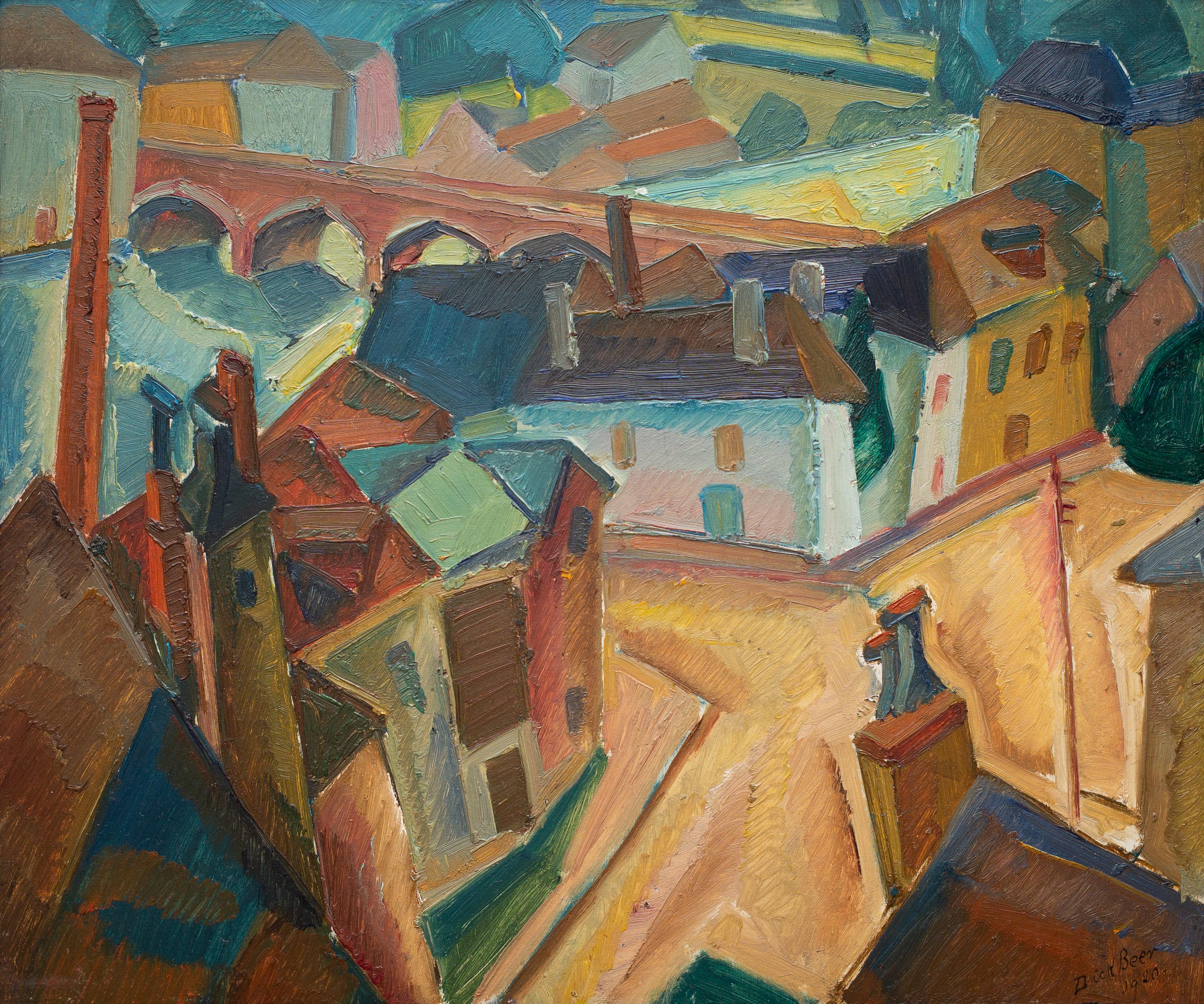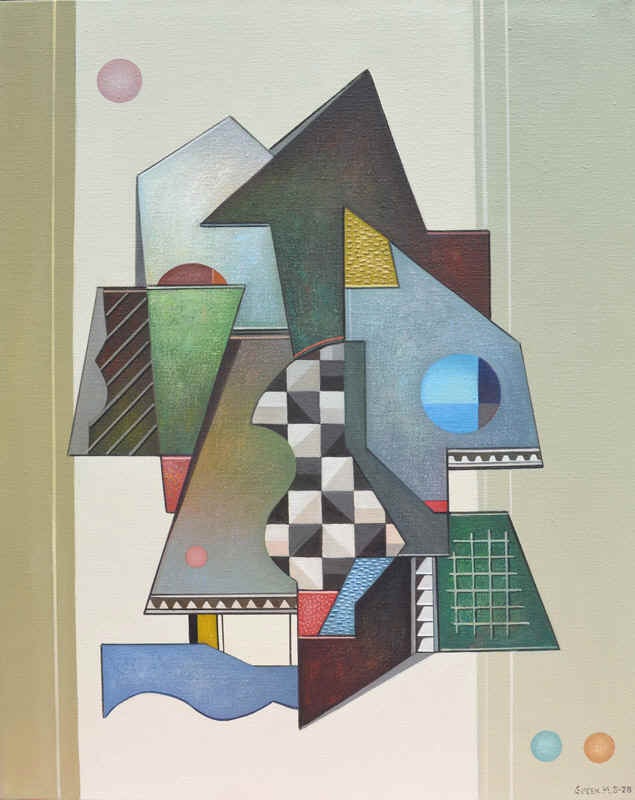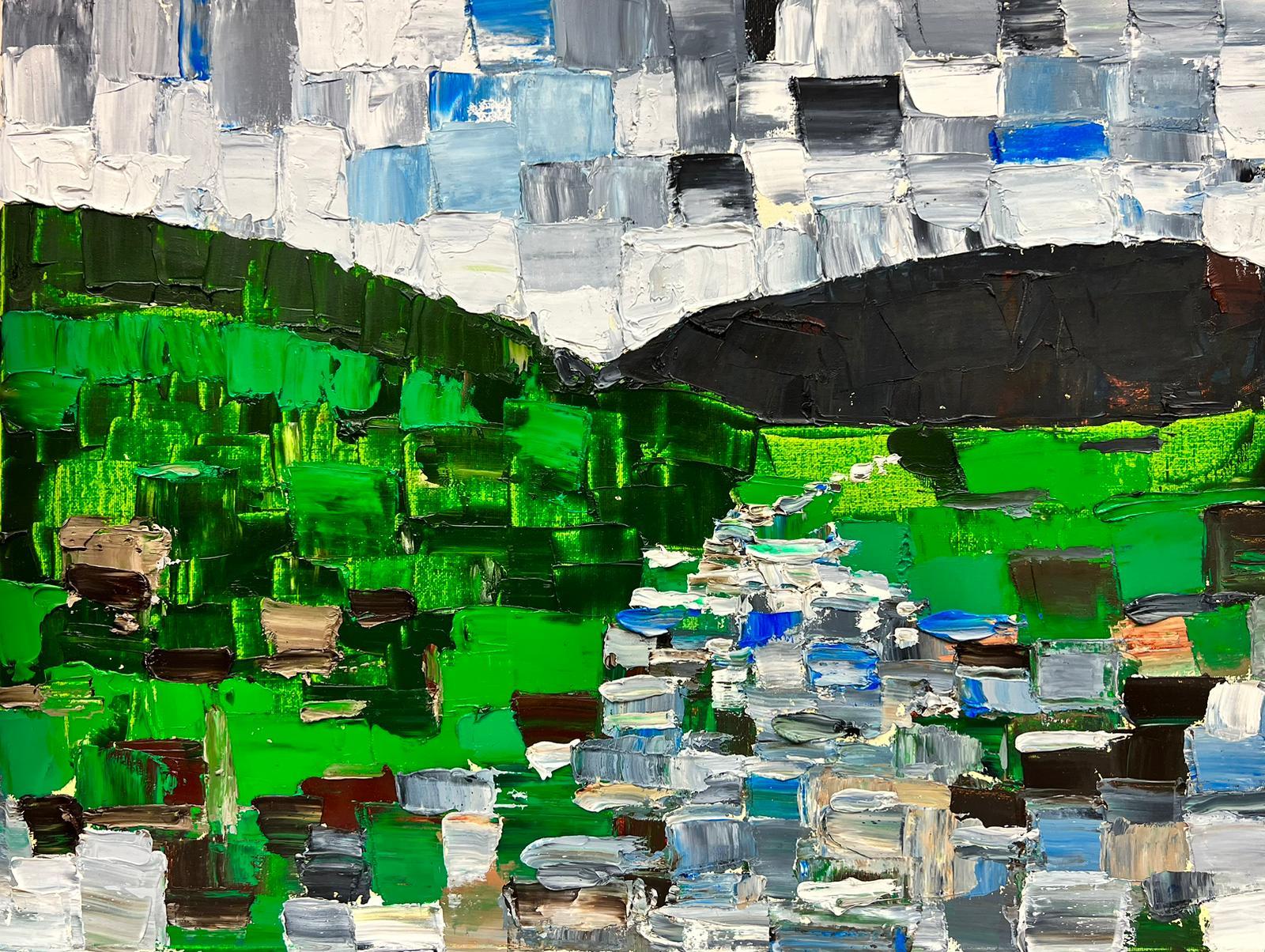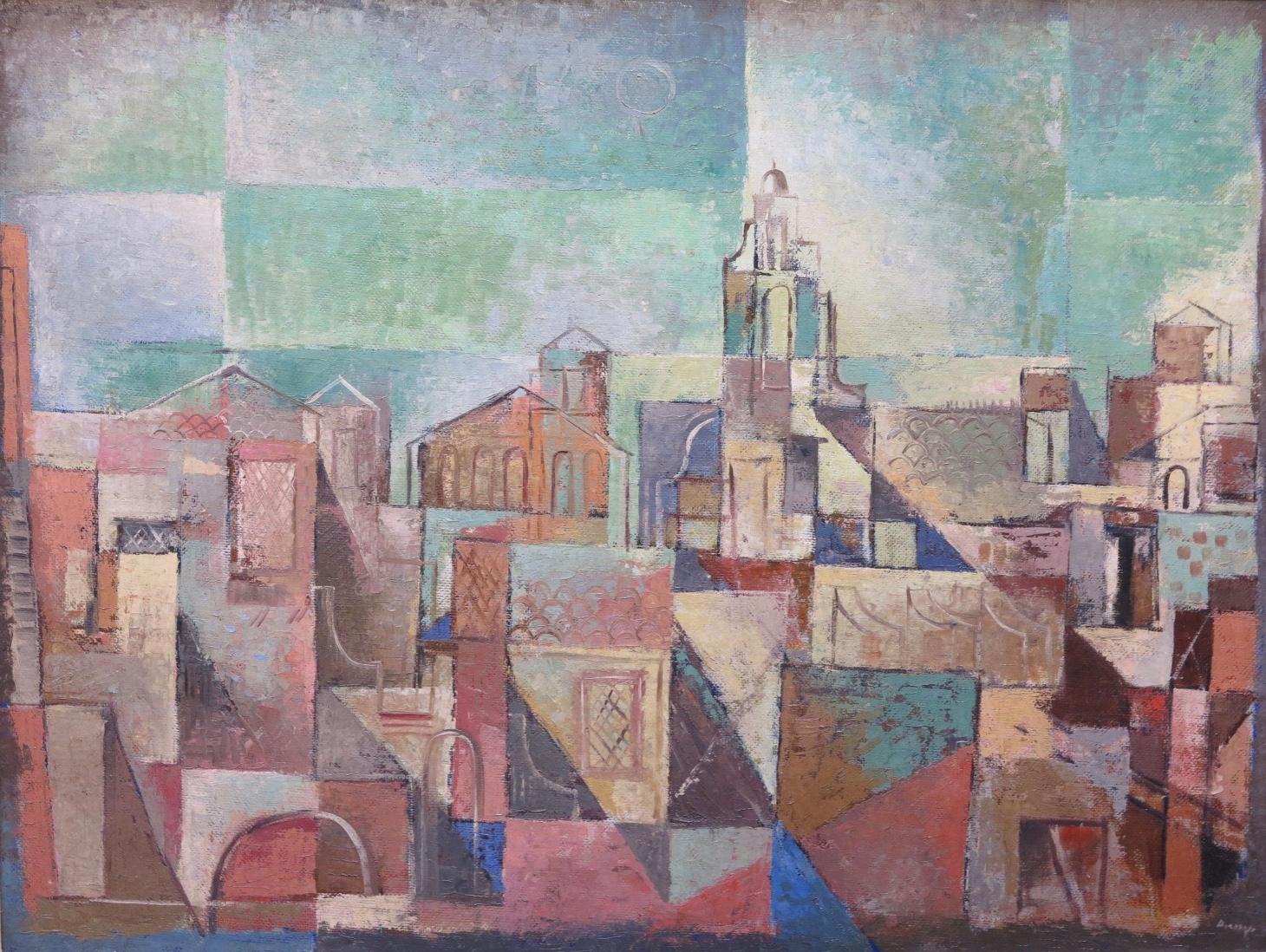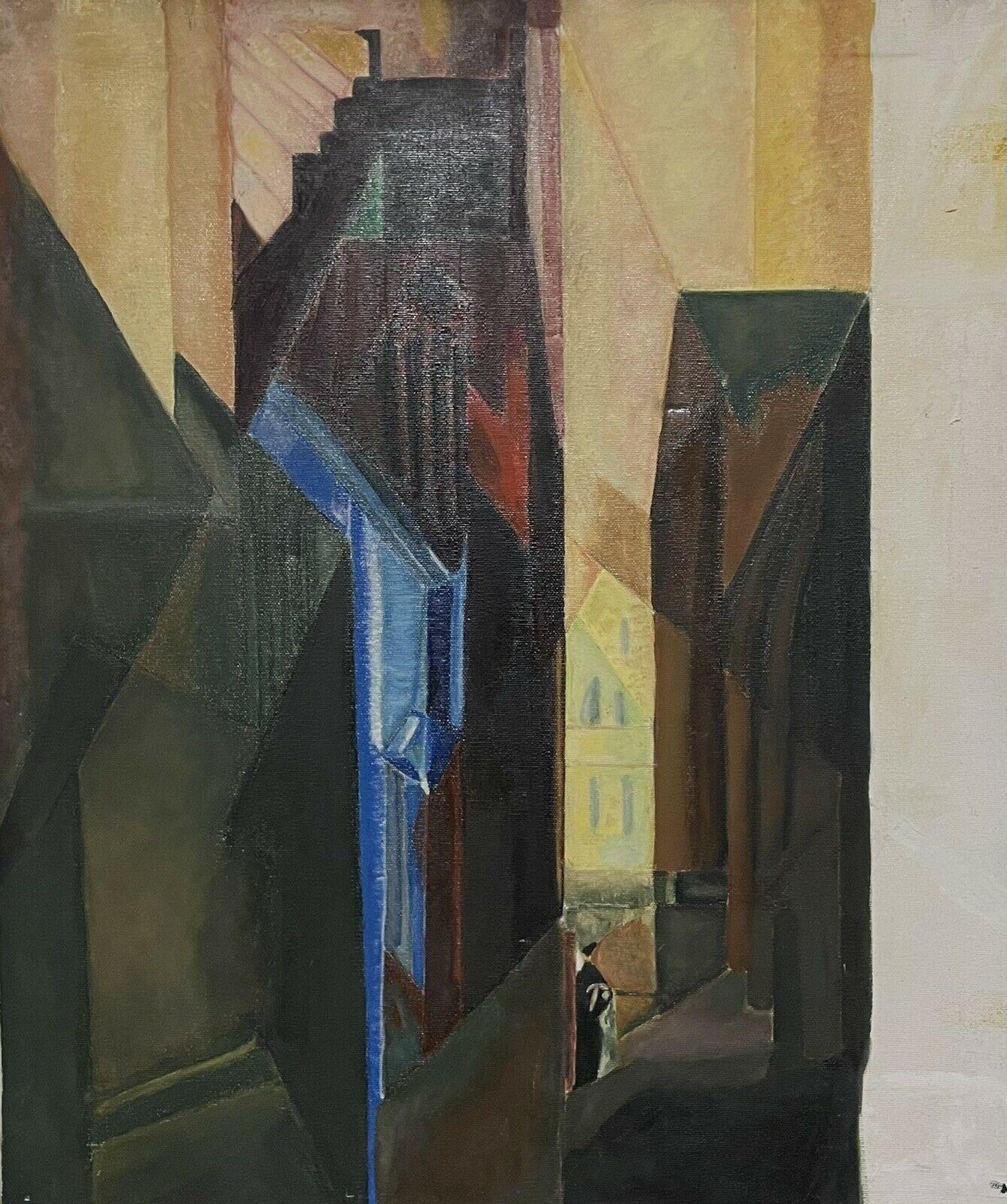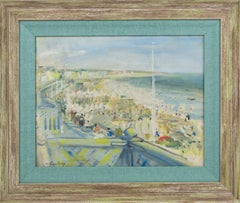
Abstract Cubist Oil on Board Painting by Robert Marc
View Similar Items
Want more images or videos?
Request additional images or videos from the seller
1 of 17
Robert MarcAbstract Cubist Oil on Board Painting by Robert Marccirca 1980
circa 1980
About the Item
- Creator:Robert Marc (1943-1993, French)
- Creation Year:circa 1980
- Dimensions:Height: 26.78 in (68 cm)Width: 29.93 in (76 cm)Depth: 1.38 in (3.5 cm)
- Medium:
- Movement & Style:
- Period:
- Condition:
- Gallery Location:Atlanta, GA
- Reference Number:Seller: V0031stDibs: LU121229464712
Robert Marc
Robert Marc was born in Auxerre, France, in 1943. He spent his youth in Switzerland and returned to France as a young man determined to enter art school. Like generations before and after him, he discovered painting not in school, but in the great museums of Europe. He considered the established masters his real teachers and gained particular inspiration from the work of Russian artists Malevich and Rodchenko. Paris of the 1960s was a seminal time in Marc’s life, with its stimulations ranging from the jazz of John Coltrane to the African art in the galleries on Rue Guenegaud. Unlike many of his peers, however, Marc deliberately avoided the limelight of Parisian life, content to spend all his time quietly working in the French countryside. His paintings are rich and complex with a palette and surface quality that warm and harmonize with his geometrically constructed planes of color. With technical and stylistic qualities reminiscent of the Cubists, the artist’s signature motifs and unique style are revealed with close study, as he explores an infinite variety of abstract cubist shapes, compelling the viewer to see the world through his fractured lens. Robert Marc exhibited in France and internationally, including shows in New York and Tokyo, developing a wide following throughout Europe, Japan and the United States until his untimely death in 1993. With a strong record on the secondary market, Marc’s paintings today form part of important private and public collections throughout the world. (Biography provided by Stern Pissarro Gallery)
About the Seller
5.0
Vetted Seller
These experienced sellers undergo a comprehensive evaluation by our team of in-house experts.
1stDibs seller since 2019
67 sales on 1stDibs
Typical response time: 1 hour
More From This SellerView All
- Abstract Cityscape Cubist Oil on Canvas Painting by E. PullmanLocated in Atlanta, GAFrench artist E. Pullman (France, 20th Century) designed this stylish cubist abstract cityscape oil on canvas painting. The skillful composition and rigorous construction use vivid c...Category
Late 20th Century Cubist Landscape Paintings
MaterialsOil, Canvas
- Post-Cubist Abstract Oil on Canvas Painting by HellierLocated in Atlanta, GAAmerican artist Hellier (20th Century) designed this stunning post-cubist constructivist oil on canvas painting. This painting named "Ste Augustine" features a skillful composition a...Category
1950s Cubist Landscape Paintings
MaterialsCanvas, Oil
- By the Beach, Oil on Canvas Painting by André HambourgBy André HambourgLocated in Atlanta, GAThis elegant oil on mounted canvas is by André Hambourg (France, 1909-1999) and features a seaside composition. The artwork is signed in the bottom left corner. The landscape is a lovely pastel color composition, by the beach, on the French Atlantic coast nearby Cabourg or Deauville. Newly framed with a gray and green ceruse wood frame and a blue canvas matte. Measurements: With frame: 22.82 in. wide (58 cm) x 19.32 in. high (49 cm). Opening: 16.13 in. wide (41 cm) x 12.63 in. high (32 cm). About: André Hambourg was born in Paris on 5 May 1909. Entering the Ecole Nationale Superieure des Arts Decoratifs in 1926, he studied sculpture under Paul Niclausse for four years. The young artist then entered the studio of Lucien Simon at the Ecole Nationale Superieure des Beaux-Arts. While in the middle of his academic studies, Hambourg had his debut solo exhibition at the Galerie Taureau in Paris in 1928. He was only 19 years old. Because of the early recognition of his talent, Hambourg became active in major Paris salons in the first stages of his fledgling career. In 1931, he was made a member of the Salon de l’Art Français Indépendant and the Salon de l’Oeuvre Unique. The first of Hambourg’s many honors was the Prix de la Villa Abd-el-Tif, awarded in 1933. As a result, the artist traveled to North Africa for the first time and spent nearly ten years working in Algeria and Morocco. The strong light of the sun, and the bleak poverty of this region, inspired Hambourg’s works. In 1937, he executed a large mural for the Algerian Pavilion at the Exposition Internationale of Paris. Throughout his years in North Africa, Hambourg would exhibit his paintings in numerous solo exhibitions in Algeria and Paris. In 1939, Hambourg was mobilized as a military reporter and draughtsman and worked on the staff of the Journal de Commissariat a la Guerre, the newspaper of the French army, under the pseudonym Andre Hache. Special missions on combat vessels led to his appointment as a war correspondent in 1944 with the staff of inter-allied SHAEF. As such, he participated in the campaigns of Germany, Alsace, the Atlantic front, and the Liberation of France. After returning to his artistic career for a short time, Hambourg became the official painter of the Navy in 1952. He undertook numerous voyages aboard French Navy vessels on missions worldwide, including Venice, the Soviet Union, Israel, Great Britain, The Ivory Coast, The United States, and Mexico. From these extended trips, the artist brought back numerous sketches and preparatory drawings for future paintings and illustrations. His international trips would have a lasting influence on his artwork. Hambourg’s adventurous maritime career resulted in his receiving the honor of Laureate of the Salon de la Marine and becoming the official painter of the Marine Ministry. In 1970, five hundred of his works created a prestigious retrospective at the Maison de Culture in Bourges, France. Other notable shows include Drawings of Venice...Category
1950s Post-Impressionist Landscape Paintings
MaterialsCanvas, Oil, Board
- The Yellow Eiffel Tower, Oil on Canvas Painting by Claude-Max LochuLocated in Atlanta, GAThis oil on canvas painting is by French artist Claude-Max Lochu (1951 -) and features an iconic Paris view with a poetic vision of the Eiffel Tower in yellow and purple tones. The a...Category
1990s Modern Landscape Paintings
MaterialsCanvas, Oil
- Abstract Chiaroscuro Landscape, Oil on Canvas Painting by Francois GentiliniLocated in Atlanta, GAThis beautiful oil-on-canvas painting was created by Francois Gentilini (1930 -). This is a small-scale oil painting by the well-listed French Modern painter Francois Gentilini. The ...Category
1970s Modern Landscape Paintings
MaterialsCanvas, Oil
- Pointillism Skyscrapers Cityscape Oil on Canvas Painting by Le BoreuxLocated in Atlanta, GAThis interesting Mid Century Modern abstract pointillist cityscape oil on canvas painting is by Le Boreux (France, 20th Century). It depicts a colorful and vibrant brutalist cityscap...Category
Mid-20th Century Pointillist Landscape Paintings
MaterialsCanvas, Oil
You May Also Like
- Cubist Painting By Swedish Artist Dick Beer, From the City of Pau, 1920Located in Stockholm, SEDick Beer (b. London 1893 - d. Stockholm 1938) From the City of Pau, Från staden Pau oil on board 38 x 45 cm signed and dated Dick Beer 1920 painted 1920 ...Category
1920s Cubist Abstract Paintings
MaterialsOil, Board
- "Tabac" Charles Green Shaw, Tobacco, Smoking, Park Ave Cubist, AAABy Charles Green ShawLocated in New York, NYCharles Green Shaw Tabac, circa 1935 Signed on the reverse Oil on canvasboard 5 3/4 x 8 3/4 inches Provenance: Washburn Gallery, New York, 1982 Private Collection (acquired from the above) Christie's, The Collector, October 20, 2021, Lot 307 Private Collection, Scarsdale, New York (acquired directly from the above) Literature: Hilton Kramer, "Charles Shaw: In the Minimal Tradition," New York Times, February 21, 1982, Section 2, p. 25. Charles Green Shaw was born in 1892 to a wealthy New York family. He lost both his parents at a very young age; his mother died when he was just three years old. Despite the early loss of his parents, Shaw lived the whimsical life of a New York socialite. As a beneficiary to an inheritance based in part upon the Woolworth fortune, he was brought up surrounded by the well-bred, well-groomed and well-moneyed citizens of New York’s elite social class. His social status as an adolescent was cultivated while spending summers in Newport and attending Christmas balls at Mrs. W.K. Vanderbilt’s. At age six, Shaw began to take an interest in drawing, and by nine, he was known to have a fondness for sketching historical costumes. After graduating from Yale University in 1914, Shaw spent a year studying at Columbia University’s School of Architecture. Subsequently he served for eighteen months as a Lieutenant in World War I. After his service, Shaw returned to New York and tried his hand as a businessman selling real estate, but his attempt was short lived. In the early 1920s, Shaw began his career as a journalist and novelist. He achieved professional success, writing consistently for magazines such as The New Yorker, Vanity Fair and The Smart Set. Shaw’s writing was a record of his approvals and disapprovals of the social crowd to which he belonged. His profession along with his social pedigree, brought him in contact with a number of the most significant figures of the 1920s such as, F. Scott Fitzgerald, Sinclair Lewis, George Gershwin, George Jean Nathan and the American artist George Luks. Some of his profiles included celebrity caricatures used as illustrations, these were the publics’ first look at Shaw’s artistic ability. In 1928, a collection of Shaw’s articles and interviews were published in one volume titled, The Low Down. Just previous to the stock market crash and the end of the Jazz Age, Shaw left New York and traveled to Paris and London. He arrived in Paris in 1929. In an autobiographical note Shaw suggests it was on this trip when he first began to paint seriously. London also acted as a great source of motivation for the budding artist. He began to sketch everyday in St. James’s Park, making large pastels of its vistas in the style of Cezanne. When he returned to New York in 1932, Shaw considered himself a painter. Success for Shaw came quickly with his first solo exhibition mounted at the Valentine Gallery in 1934. The following year Albert Eugene Gallatin included works by the artist in an unprecedented solo exhibition at his Gallery of Living Art at New York University. Shaw further cemented his reputation as an artist through his association and friendship with fellow abstract artists Morris and Gallatin. The trio soon was regarded as ‘the Park Avenue Cubists’. As a founding member of the American Abstract Artists, Shaw became an impassioned defender of the style. His 1938 essay in the American Abstract Artists yearbook, “A Word to the Objector”, acted as a defense against those who failed to see the illustrative quality of abstract art and scolded those who disregarded American artists as serious Abstractionists. He was also an influential force at the Museum of Modern Art, where he sat on the Advisory Board from 1936 to 1941. In the later years of Shaw’s life he continued to produce abstract paintings, yet in a more private manner. He was known to be a reserved man— a ‘gentleman’; not much is known about his personal life in these later years. During this time he maintained his career as a writer, publishing the well-known children’s book, It Looked Like Spilt Milk in 1940 and two books of poems in 1959 and 1962. In 1974, Shaw died...Category
1930s Cubist Landscape Paintings
MaterialsOil, Board
- Sea Garden, Teresa Pemberton, Original Abstract Seascape Painting, Bright ArtBy Teresa PembertonLocated in Deddington, GBTeresa Pemberton Sea Garden Original Oil Painting Oil Paint on Canvas Size: H 100cm x W 100cm x D 3.5cm Sold Unframed Please note that in situ images are purely an indication of how ...Category
21st Century and Contemporary Cubist Abstract Paintings
MaterialsCanvas, Oil
- AscensionBy Maurice GreenLocated in West Hollywood, CAPremiering for the first time in three decades, the original paintings of American artist Maurice Green. Born in 1908 in Latvia, Maurice Green studied with prominent artists of the d...Category
1970s Cubist Abstract Paintings
MaterialsCanvas, Oil
Price Upon Request - The Golden Rule, Color Field, Abstract Geometric Landscape in Pastel Tones, 2022By Natalia RomanLocated in Barcelona, ES"The Golden Rule" is an abstract painting by Spanish artist Natalia Roman. These color field paintings are inspired by both modernist shapes of the fifties and sixties combined with ...Category
2010s Cubist Abstract Paintings
MaterialsOil Pastel, Oil, Acrylic, Watercolor, Gouache
- Abstract Cubist Colorado Red Tonal LandscapeBy Norman BaaschLocated in Houston, TXWarm toned cubist Colorado cityscape of geometric buildings and trees by artist Norman Baasch in 1968. Signed and dated by artist. The canvas is not framed.Category
1960s Cubist Landscape Paintings
MaterialsOil
